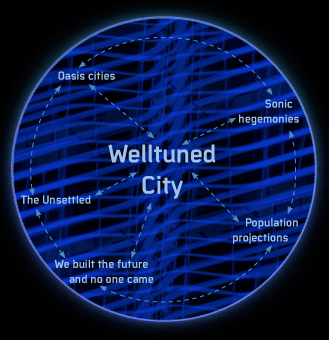We built the future and no one came
“The default mode of urban development is autocatalytic, driven by the economic logic of proximity and supply and demand… Urban centers are evolving organisms, not engineering problems.”
Benjamin de la Peña, urban planning specialist [1]
An hour out of Seoul, 20 minutes from the Incheon International Airport, we are standing in the middle of a six-lane highway — not a car in sight. Evenly spaced in the near distance are at least a dozen glittering new high-rise developments. To my right is an edifice built around a sweeping funnel design, like a space ship and at the front a sign declares it to be Tomorrow City. It is closed and grass grows up through cracks in the pavement.
This whole area is Songdo Future City, part of the massive redevelopment of the Incheon Free Economic Zone which also includes the islands of Yeongjong and Cheongna. And it’s a ghost town.
Back in the centre of Seoul, at the Namdaemun Markets, the streets are narrow and winding, with stallholder’s barrows utilising every spare inch of real estate. It hums and buzzes with crowds of people, noise and small-scale commerce. [2]
Urban planning specialist Benjamin de la Peña suggest: “We must avoid confusing aesthetic order with actual order. We must recognize the native intelligence and resilience of autocatalytic communities and not suffocate them with our push for the logic of efficiency. Our plans should be additive rather than destructive and should respect and imitate the incremental (and fundamental) forces at play.” [3]
However he concedes the limitations of the organic growth model: “While optimized for the small grain and the economics of proximity, it is blind to larger-scale challenges and longer-term threats, such as earthquakes or climate change. This city can build its own streets but cannot build mass transit. It can build a local economy, but not protect a local ecology. City leaders will have to find the balance. We all stand to gain, but only if we are prepared to give up control.” [4]
Notes
1] Benjamin de la Peña (2013) “The autocatalytic city,” City 2.0. The Habitat of the future and how to get there, TED Books 31, TED Conference LLC, New York, Kindle e-book, downloaded from Amazon.com, Section 2 para 6
2] Field trips: Songdo, South Korea, 9 June, 2015; Namdaemun Markets Seou, South Korea, 2 June, 2015
3] de la Peña, Section 4 para 2
4] de la Peña, Section 4 para 3
Welltuned City is a web-adaption of one narrative stream from the larger interactive installation Sounding the Future. © Gail Priest 2014-16
